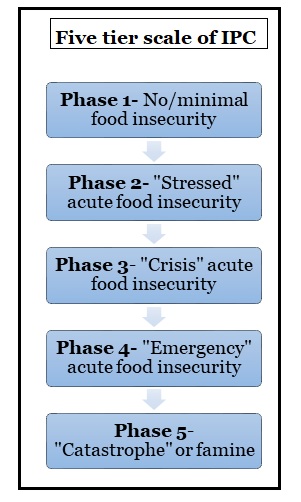900 319 0030
enquiry@shankarias.in
Gaza and Haiti are facing imminent famine due to severe hunger caused by conflict and crisis.


Operation Indravati was launched by India to evacuate its citizens stranded in war-torn Haiti

Famine was previously declared by IPC in Somalia (2011) and South Sudan (2017)
|
Factors of famine |
|
|
Integrated Food Security Phase Classification |
|